Check safety equipment
Embarking on a sailing adventure is not just about catching the wind in your sails;
it's about ensuring you have what it takes to navigate the unpredictable waters and unforeseen challenges.
Unlike on land, where emergency help is just a phone call away, at sea, sailors must be self-reliant and equipped to handle any situation that may arise.
★ Safety Briefing
Before you hoist your sails, take a moment for a safety briefing.
The skipper should walk the crew through the proper use of each safety item.
In an emergency, every second counts, and everyone onboard should know the drill even if the skipper is incapacitated.
1. Lifejackets
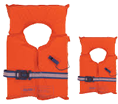 Lifejackets are your floating insurance policy.
Lifejackets are your floating insurance policy.
Ensure each crew member has a well-fitting lifejacket that can be accessed within 10-15 seconds.
It's not just a daytime accessory;
in uncomfortable weather or at night, wearing one should be a rule for all, especially children.
2. Safety Harness
A wearable safety device designed to prevent falls overboard.
This harness typically includes straps and attachment points, allowing sailors to secure themselves to the boat, minimizing the risk of accidents during rough seas or adverse weather conditions.
3. Fire blanket
A vital safety tool used to extinguish small fires or to wrap around individuals in the event of a fire emergency.
Made of fire-resistant materials, the fire blanket can effectively smother flames by cutting off the fire's oxygen supply.
4. First Aid Kit
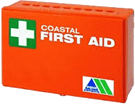 Make the First Aid kit your first mate.
Make the First Aid kit your first mate.
Ensure it's in an easily accessible spot, and check the list inside to confirm it's fully stocked.
From bandages to instructions on CPR, make sure you're ready to tackle common emergencies.
5. Torch
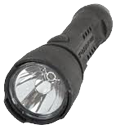 In the dark corners of your boat, a torch is your guiding light.
In the dark corners of your boat, a torch is your guiding light.
Check that it works and shines brightly, ensuring you won't be left fumbling in the dark.
6. Binoculars
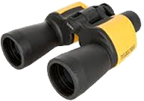 Binoculars aren't just for scenic views; they're your eyes on the water.
Binoculars aren't just for scenic views; they're your eyes on the water.
Test them before departure to make sure they're ready for line-of-sight navigation and spotting a crew member overboard.
7. Flares
 Flares are your SOS to the world.
Flares are your SOS to the world.
Check the expiration date, follow the instructions, and resist the urge to use them for anything other than a real emergency.
Your idea of fun might cause unnecessary panic and calls to emergency services.
8. Fire Extinguisher
Ensure your fire extinguisher is ready for action.
Check its contents, safety pin, and inspection date.
In case of fire, cut off the fuel supply, follow instructions, and remember, a misplaced act of fun can lead to regret in a real emergency.
9. Knife
 A sharp knife is a sailor's trusty companion.
A sharp knife is a sailor's trusty companion.
Keep it close, as sometimes cutting a line in seconds can save you hours of trouble.
10. VHF
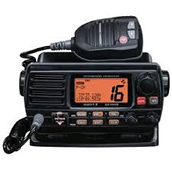 Beyond emergency situations, VHF communication proves invaluable in various maritime scenarios, including communication with port authorities, providing and obtaining information on navigation, receiving weather updates, and monitoring harbor activities.
Beyond emergency situations, VHF communication proves invaluable in various maritime scenarios, including communication with port authorities, providing and obtaining information on navigation, receiving weather updates, and monitoring harbor activities.
This holds true not only during sailing races but also in non-emergency situations, such as vessel malfunctions or changes in navigation plans.
The range of a VHF (Very High Frequency) radio on a sailboat depends on various factors such as the station's power, antenna efficiency, environmental conditions, and antenna height.
Typically, the standard range at sea is around 5 to 20 nautical miles.
Tune in to Channel 16 if you are seeking help, or keep the communication active whenever you are on the water, as it may be crucial in case other boats are in an emergency and need assistance.
In emergencies, use it wisely, following the proper protocol for PAN PAN calls or MAYDAY calls.
PAN PAN
This call is used to indicate an urgent situation that does not pose an immediate danger to life or property.
It is a step below "MAYDAY" in terms of urgency
Examples of situations warranting a PAN PAN call include a medical emergency that is not life-threatening, a mechanical problem that requires assistance but does not immediately endanger the vessel or aircraft, or a navigational hazard that requires attention.
However, if it’s urgent but not life-threatening, you should send a Pan-Pan message slowly and clearly:
PAN PAN Call
- Tune your VHF radio to Channel 16, which is the international hailing and distress frequency
- Press and hold the microphone button on your VHF radio to activate the transmission.
- This is sailing vessel: . . . . . . . . . . .
- PAN PAN, PAN PAN, PAN PAN
- Our position is: . . . . . . . . . . .
- We have: . . . . . . . . . . . (e.g., engine trouble, medical issue)
- Requesting : . . . . . . . . . . . (e.g., advice, support)
11. Life Raft
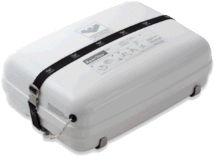 Your last resort. Familiarize yourself with its location, read the instructions, and know when to deploy it.
Your last resort. Familiarize yourself with its location, read the instructions, and know when to deploy it.
The life raft is for when the ship is sinking;
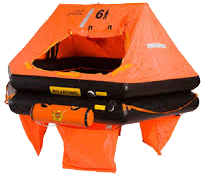 As you prepare to set sail, remember that responsible and prepared sailing not only ensures your safety but also contributes to the proud tradition of sailors facing challenges head-on.
As you prepare to set sail, remember that responsible and prepared sailing not only ensures your safety but also contributes to the proud tradition of sailors facing challenges head-on.
So, check your safety equipment, embark on your journey, and may your adventures at sea be filled with excitement and safe returns to the port!
Staying onboard is the priority, until all other options are exhausted

